If you’re curious about VPNs but not sure where to start, you’re in the right place. Our guide to setting up and connecting to a VPN will have you browsing the web securely in minutes.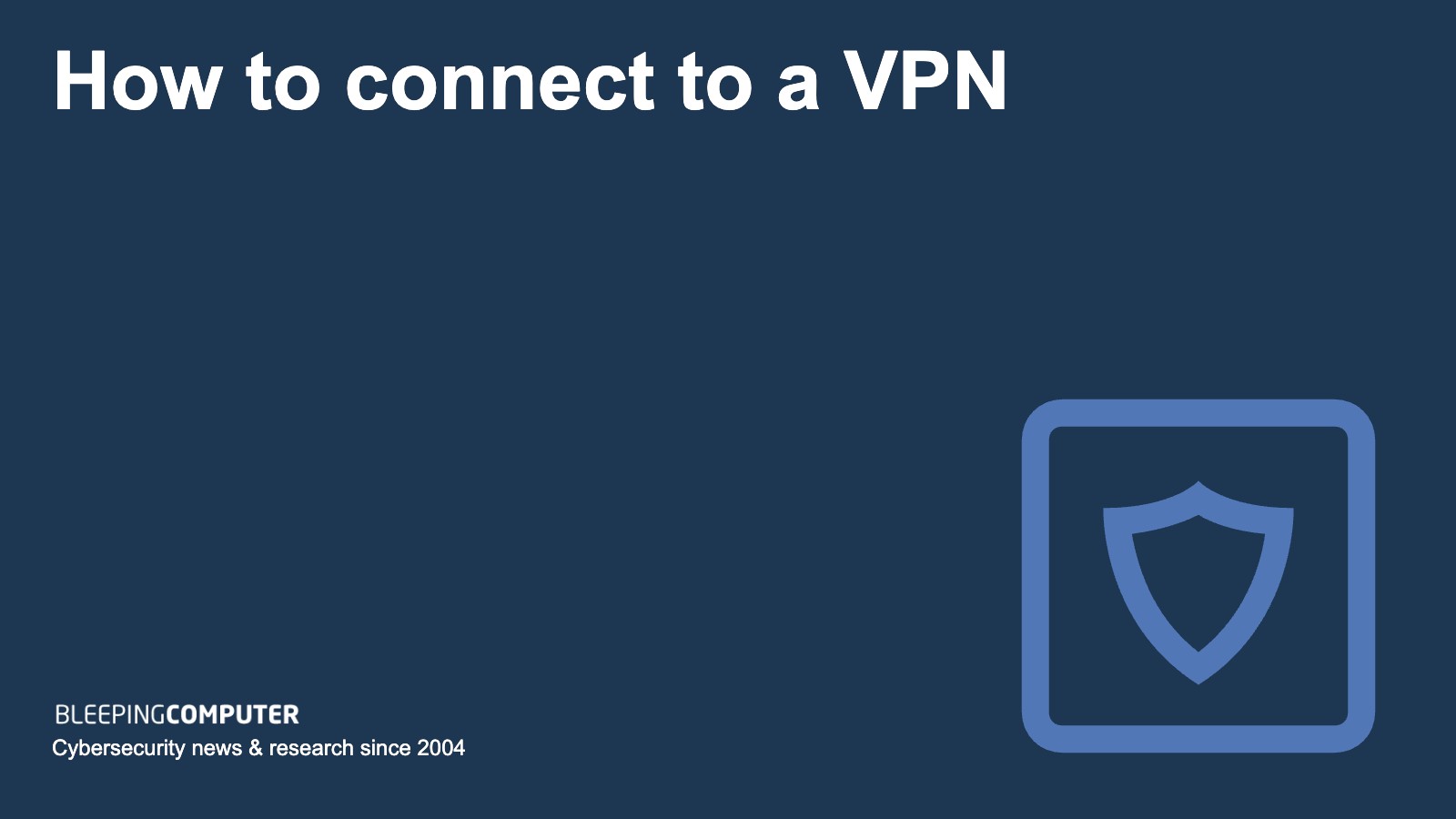
Contrary to popular belief, it’s actually a pretty good time to be a privacy-conscious internet user. Sure, plenty of websites still try to make money by selling details of your online activities, but on the plus side, we’ve never had such a wide array of tools to fight back with. Take Virtual Private Networks (VPNs), for example, they let you hide your IP address, location, and browsing habits in a single click. Some even block ads, trackers, and shady websites as well!
We’re here to help you take the first step towards digital anonymity. We’ll explain what a VPN is and then help you understand what they can (and can’t) do. Most importantly, we’ll walk you through the process of selecting and using a VPN step-by-step. You don’t have to be a computer expert to keep yourself safe online, and we intend to prove it.
Quick version: our five-minute guide to using a VPN
Ready to get started? Just follow the steps below and you’ll be connected to a VPN in no time.
How to connect to a VPN:
- Before anything else, you’ll have to decide which VPN you want to use. Our first choice is NordVPN, although we’ve had great experiences with Surfshark and ExpressVPN too.
- Decide how long you’d like to subscribe for. Longer plans tend to come with steeper discounts but you will pay more upfront. The vast majority of consumer VPNs offer a money-back guarantee, so take advantage of this to try services out risk-free.
- Finish the checkout process and download the appropriate version of the VPN app for your system. Once it’s installed, log in.
- Now it’s time to choose a server. If you just want enhanced privacy, any will do. However, if you’re trying to access a geo-blocked service, you’ll have to pick a server in the corresponding country. Channel 4 only works in the UK, for instance, so to watch it you’ll need a British server.
- Finally, hit the big power button on the main screen. After a few seconds, you’ll be connected, meaning your internet traffic is encrypted and hidden from anyone who might be watching. It really is that simple!
WANT TO TRY THE TOP VPN RISK FREE?
NordVPN is offering a fully-featured risk-free 30-day trial if you sign up at this page . You can use the VPN rated #1 with no restrictions for a month - great if you want to binge your favorite show or are going on a short trip.
There are no hidden terms - just contact support within 30 days if you decide NordVPN isn't right for you and you'll get a full refund. Start your NordVPN trial here .
Why should I bother with a VPN?
You’d be surprised by how many organizations can see what you get up to online. Your Internet Service Provider (ISP) is a prime example, and in many countries, they’re legally required to keep records of your activities for a year or more. Similarly, workplaces almost always have tools in place to make sure employees don’t spend their shifts browsing Facebook. Even the free WiFi on trains or at coffee shops is monitored, just in case you use it for nefarious purposes.
There’s no way to tell whether this data is being sold without your permission. Further, the more people with access to your activity records, the more likely a breach or leak becomes. VPNs encrypt your internet traffic, meaning that anyone watching the network will only see a meaningless jumble of data. This not only helps protect your privacy but also prevents network admins from blocking access to specific sites or throttling your speeds when they detect particular types of activity.
If you’re someone who travels a lot, you might have noticed that certain websites aren’t available internationally. Usually, you’ll find that your favorite streaming sites are inaccessible, but you also may be unable to log into your workplace’s portal or banking service while abroad. Depending on your location, even popular platforms like Google might be blocked! VPNs route your traffic so that the sites you visit think you are wherever your chosen server is, helping you regain access to all of your usual services from anywhere in the world.
Choosing the right VPN provider
Before you decide which VPN to use, it’s important to think about your needs. If you’re someone who watches a lot of TV, you’ll want a VPN that has the ability to go undetected by major streaming platforms. Alternatively, if you just want the most secure service available, we’d recommend looking into the provider’s encryption, audit history, and logging policy.
Other key factors to consider include:
- Server availability: A higher number of locations theoretically means you can access a wider range of content. This also has the benefit of reducing the average distance to the closest server, which helps minimize latency. Most paid VPNs offer around 60 locations.
- Speed: VPNs add an extra step to your data’s path across the internet, so there will always be some degree of slowdown. However, some services are much quicker than others. Your actual speed results will vary based on how quick your connection is, how many other people are using the same server, and various other factors, but to simplify things, we’ve run dozens of tests to find out which VPNs are fastest on average.
- Device support: Ideally, you’d want your VPN running on every device you own. Generally, providers offer Windows, Mac, iOS, and Android apps, but some also have command-line installers for Linux as well as support for Amazon Fire Stick, Android TV, and other less-common platforms.
- Connection limits: How many devices are you allowed to connect at once? The industry standard is six, but some services allow more. In fact, we’re starting to see an influx of VPNs that let you have as many simultaneous connections as you like.
- Pricing: Generally, you can expect to pay around $12 USD per month for a high-quality VPN. Naturally, there’s some variance, though. Additionally, if you sign up for a long-term plan or take advantage of a seasonal discount, you can usually get at least 50 percent off.
- Customer support: You shouldn’t have to wait forever to get help when something goes wrong. Live chat-based support is quickly becoming the norm for paid VPNs, though at the very least, we’d expect to see a ticket system or support email address. If you’re considering a service without any of these, we’d suggest looking elsewhere.
Consumer VPNs aren’t your only option, either (though most people will be better off using one, if only for simplicity’s sake). With a little time and effort, you can create your own VPN, giving yourself full control over the type of encryption and locations supported.
Getting a VPN set up
The first step is choosing a VPN. We’ve used NordVPN in the example below, but no matter which service you go for, the installation and connection process will be almost identical.
When you’re ready, navigate to the VPN’s pricing page and select your preferred plan. A one-month subscription is a good choice if you’re just trying the service on for size – just make sure that the money-back guarantee is available on short-term plans before you pay.
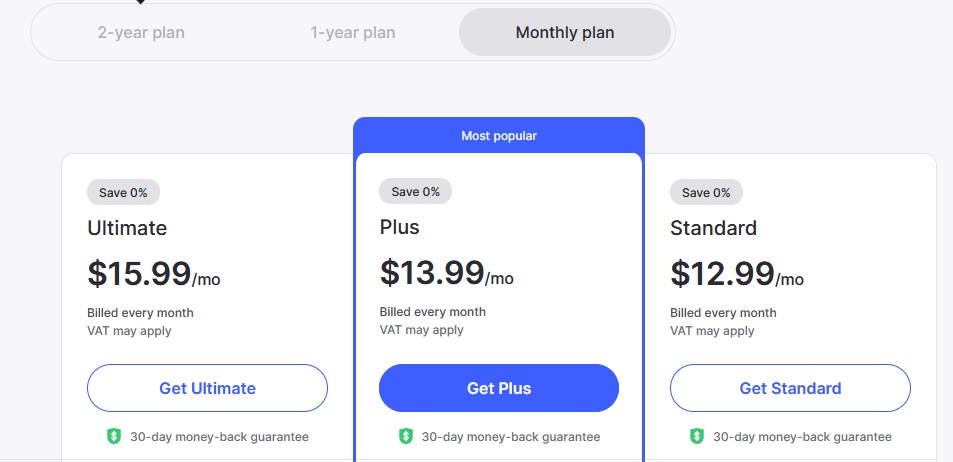
Some VPNs have multiple subscription tiers. Usually, more expensive plans include extras like cloud storage, a password manager, or access to specialty servers.
When prompted, enter your payment details, email address, and preferred password. Once you finish the checkout process, you’ll be taken to a screen where you can download the VPN itself. There’s usually a downloads page linked in the header as well, in case you’d like to see which platforms are supported or grab a version for a different operating system than the one you’re using (some VPNs allow you to directly download the Android app’s .apk file, for instance).
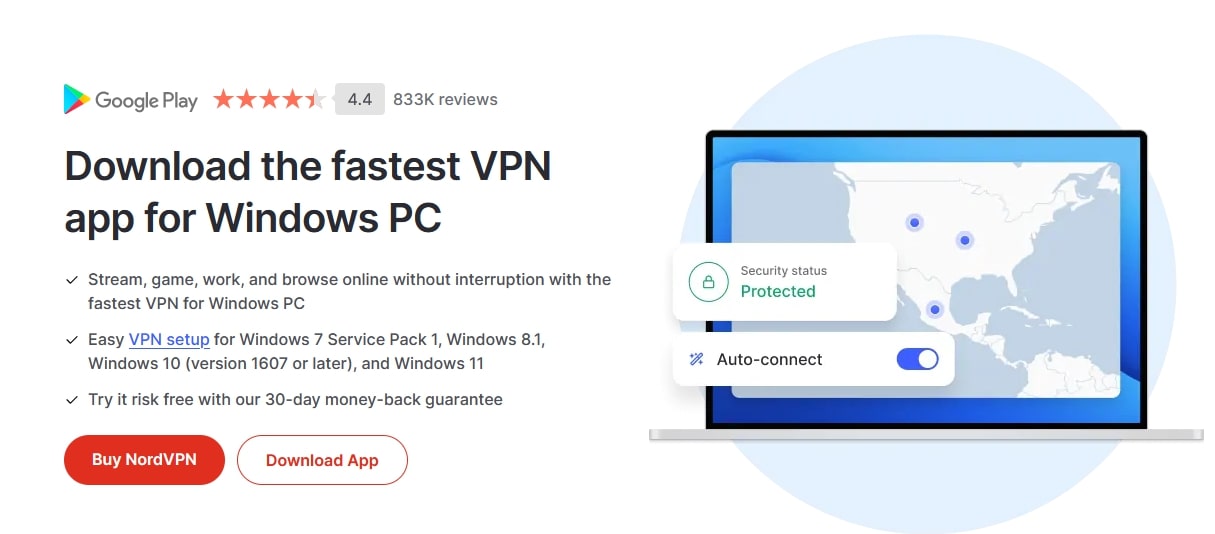
After you’ve signed up, you’re free to download and install the VPN app.
Now it’s time to get started. Open the installer file that you just downloaded and it’ll take care of everything for you. Usually, the default installation settings are your best bet, though some providers (particularly free ones) will ask if you want to install additional software such as toolbars. We strongly suggest you decline, since these weren’t what you set out to get and will just clutter up your system.
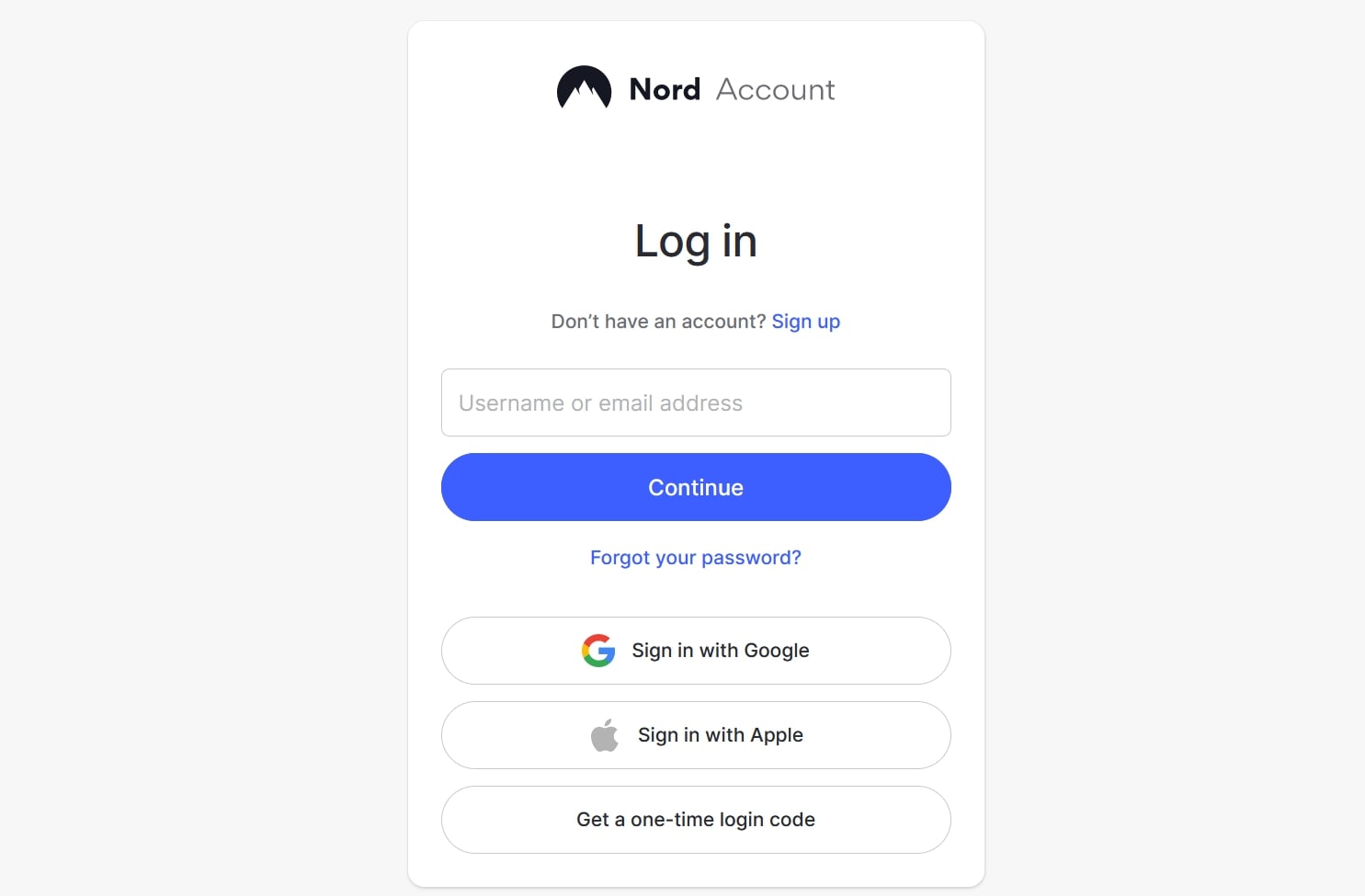
There are a surprising number of different ways to log into popular VPNs
Launch your newly installed VPN app and sign in. Every provider handles this differently: some simply get you to put your login credentials into the app, others will redirect you to their website and have you login there, and some just send you a sign-in link via email. Note that if you initially bought the VPN while logged in using a Google or Apple account, you’ll want to use that again here. Otherwise, just use the username and password you created during checkout.
You should be looking at the main screen (sometimes called the home screen) of the VPN app. Before we connect for the first time, it’s a good idea to make sure all of the privacy features are turned on, so let’s take care of that now.
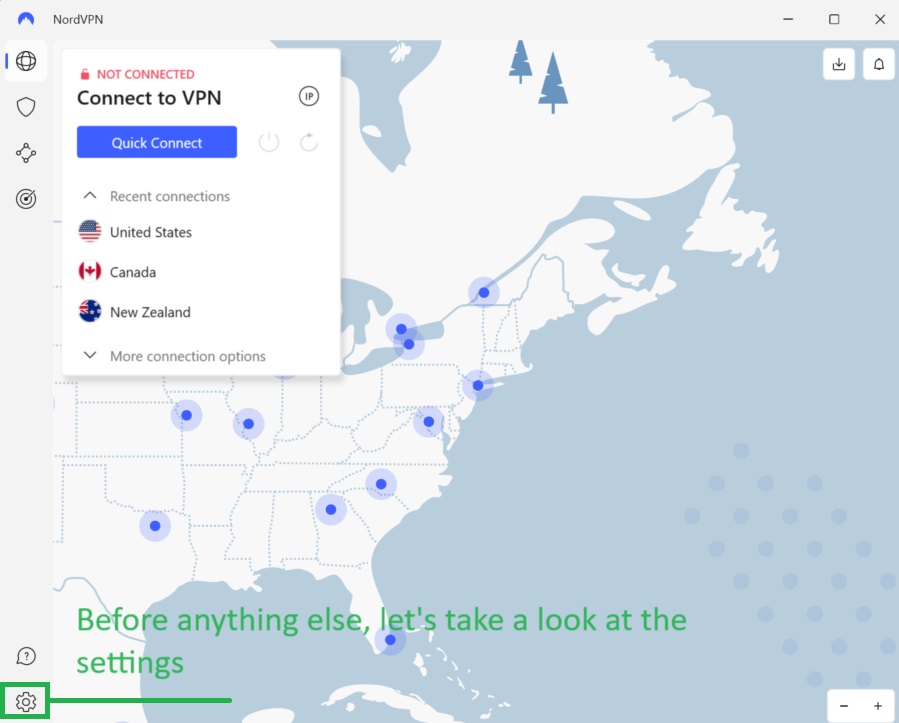
Privacy features aren’t always turned on by default, so we recommend checking out the settings menu before anything else
Depending on which VPN you’re using, you’ll access the settings menu in different ways. NordVPN has a cog icon on the bottom-left that’ll take you there directly as well as a shield icon that opens up the Threat Protection menu. Some others have a three-line menu icon in the corner that, when clicked, will reveal links to different pages.
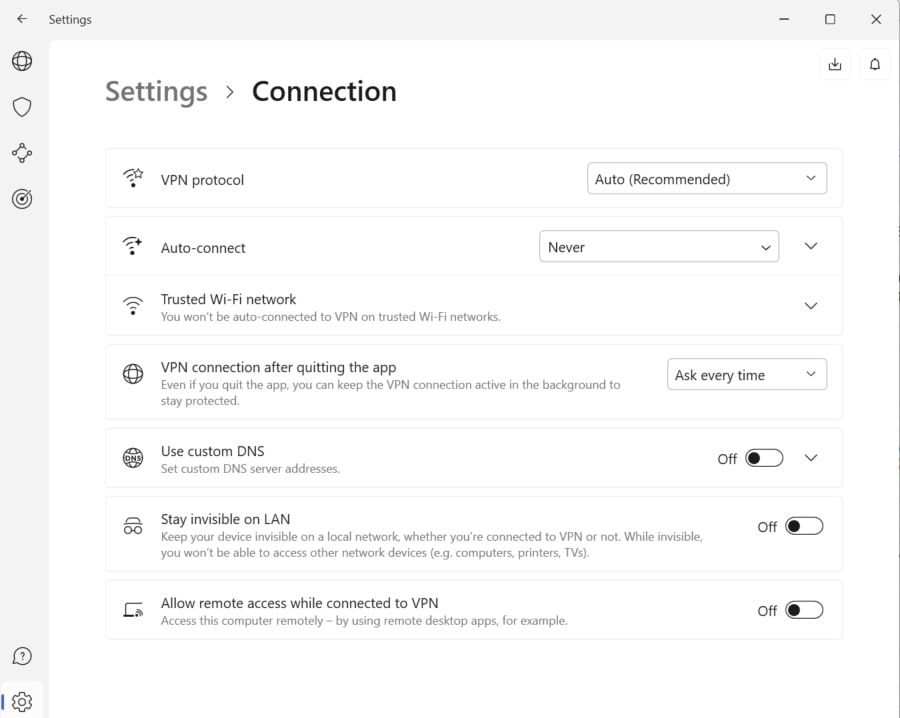
NordVPN’s connection settings menu lets you decide which protocol to use, as well as when the VPN should turn on or off
Some of the things to keep an eye out for include auto-connection settings, ad-blocking and/or tracker-blocking, and DNS leak protection. Ideally, these would all be turned on. You’ll also want to activate the kill switch, since this stops you from browsing without protection if your connection drops unexpectedly (for instance, when you go through a tunnel or switch networks).
Connecting to the VPN
When you’re done in the settings, it’s time to think about which server you should use. For general web browsing, we’d suggest using the Quick Connection feature – this will automatically pick the fastest available server, which is almost always in the same country as you.
Are you planning on trying to access a region-locked service from abroad? In that case, you’ll have to pick a server in a country where that service is available. For instance, Peacock TV won’t let you watch anything if you don’t have an American IP address, so you’d need to use one of the available servers in the United States. You may even find that your provider has specially-optimized some of its servers for streaming or torrenting, so it pays to take a closer look at what’s available.
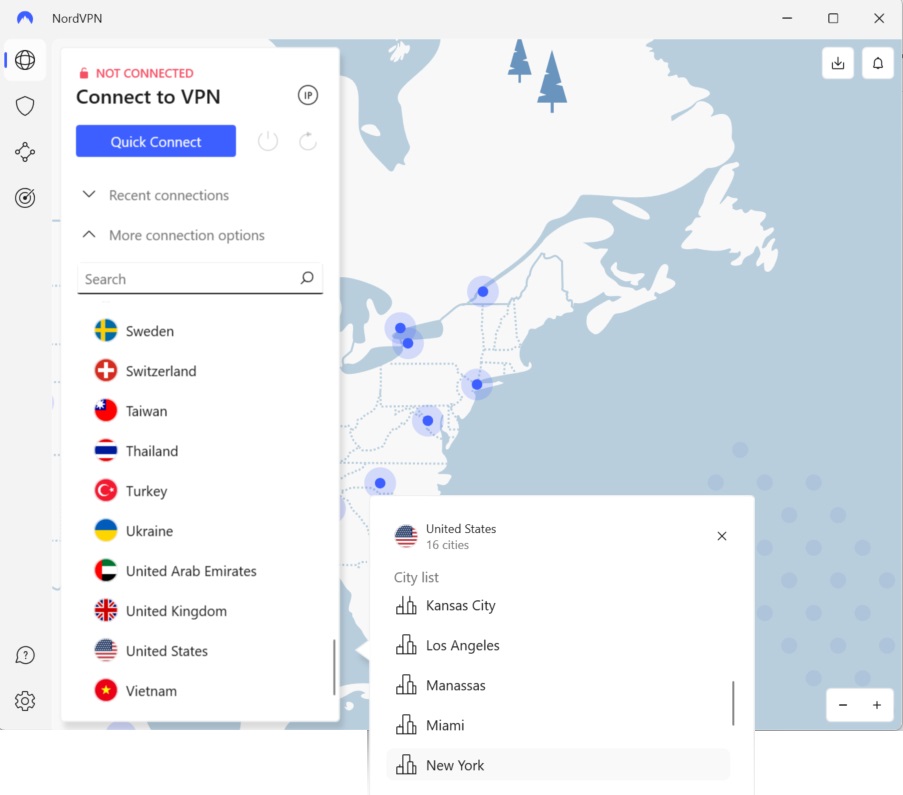
Some VPNs let you access servers in a specific city, but most of the time, you’ll only be able to pick a country
Simply search for your desired server location and double-click it. Often, VPNs will connect you right there and then. Some apps may require you to hit the connect button manually, but in either case, you’ll be protected a few seconds later.
Troubleshooting: for when things don’t go as planned
Having problems? Don’t worry, most of the time, you can rectify the issue with just a few simple adjustments. Here are a few quick and easy things to try if you can’t get connected to the VPN:
- Make sure you’re using the most up-to-date version of the app.
- Double-check that you’re logged in.
- Try another server.
- Change to a different connection protocol (or make sure you’re using the Auto setting).
- Turn off the stealth mode or any data obfuscation features.
- Create an exception for your VPN app in the firewall.
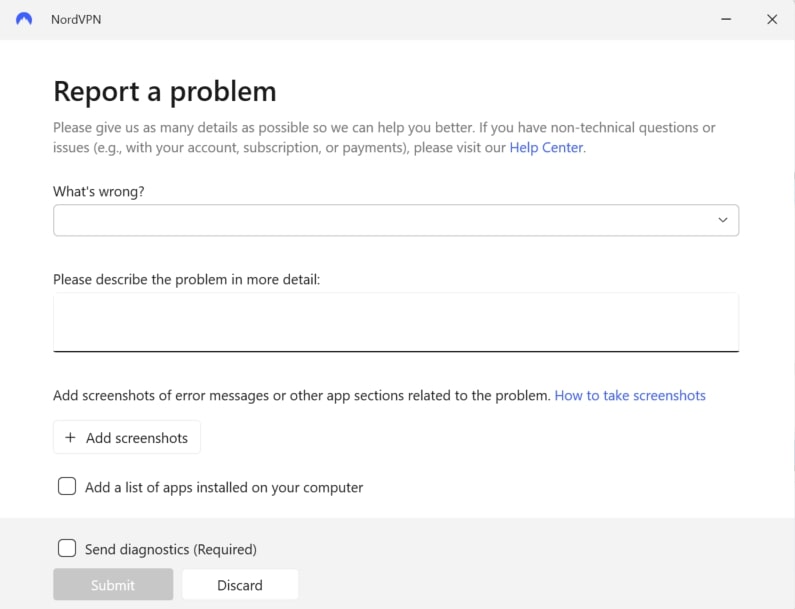
Clicking the question mark icon in NordVPN lets you send a support request without ever leaving the app
If none of these steps helps resolve your issue, it’s best to get in touch with customer support. Some apps (including NordVPN) allow you to submit a ticket directly, but generally, you’ll receive a response faster using the live chat section of your provider’s website. Often, there’ll be a help button somewhere on the bottom right that’ll get you talking to a human in seconds.
Common FAQs about VPNs
Are VPNs really as secure as they make out?
A properly configured VPN that uses industry-standard encryption can keep your traffic hidden from network administrators, Internet Service Providers, and public hotspot owners. However, that doesn’t mean much if the VPN itself keeps detailed logs of your activities, and even less if it’s willing to share these logs with anyone who asks.
You can protect yourself by choosing a VPN that follows a strict no-logs policy. Of course, plenty of shady providers claim to keep no logs, which is why it’s becoming increasingly popular for VPNs to have their privacy policies and network infrastructure audited by third parties.
Note that even with a VPN active, you are not completely untraceable. The sites you visit will still know what you do there, for instance. Additionally, while it’s normally impossible to identify an individual user from their shared VPN IP address, activities like logging into your social media accounts or sharing personal information online will undo any benefits you would receive.
Can I protect my privacy with a free VPN?
You’ll often find free VPNs that claim to be the fastest, most secure services on the market. In our experience, however, they tend to pale in comparison to their paid counterparts. Free users almost always have to contend with a low monthly bandwidth limit, throttled speeds, and a lower level of customer support. Plus, they usually can’t access streaming services while connected.
There are a handful of worthwhile free VPNs out there. ProtonVPN and Windscribe, for instance, do a great job of keeping you safe. Still, to access all of their features, you’ll have to upgrade to a paid plan. The good news is that paid VPNs almost always offer a money-back guarantee that can effectively be used as a free trial. If you’re not impressed, just cancel for a full refund.
What’s the difference between a VPN and a proxy?
Proxy servers, or proxies, are tools that mask your IP address by sending your data through a server somewhere else in the world. They can also help beat some forms of web-filtering, since you’re only accessing a seemingly benign site; the proxy server is the one accessing the blocked content.
Proxies differ from VPNs in one crucial way, though: they don’t encrypt your data. This means that whoever owns the server can see all of the information you transmit, from the sites you visit to your login credentials. As such, they’re a poor alternative for privacy-focused individuals. VPN apps also make it easier to switch locations and beat country-wide censorship, and they sometimes have extra features like ad-blockers built-in that make them better for everyday use.
How can I speed up my VPN connection?
Slowdown is an unavoidable part of using a VPN. After all, it takes time to encrypt, transmit, and decrypt your data. That said, there are things you can do to help maintain as much of your original connection speed as possible. The first step is to use servers that are close to your actual location – this helps keep delays to a minimum by reducing the distance your data has to travel.
The VPN’s settings have a part to play here too. The stronger your encryption, the longer it takes to process data. We don’t recommend compromising your security for higher speeds, but you may want to switch to a connection protocol that was designed with speed in mind. WireGuard is significantly faster than OpenVPN, for example.
This isn’t a VPN-specific issue, but it is one that’s easily overlooked. Remember that your internet speeds can change based on how you use your computer. You’ll notice slower speeds if you’re downloading things in the background, or if someone is streaming in another room as you browse. Try scheduling large downloads to take place when you’re sleeping, sticking to one task at a time, and minimizing the number of internet-connected apps that start automatically.


Post a Comment Community Rules
You need to login in order to post a comment
Not a member yet? Register Now